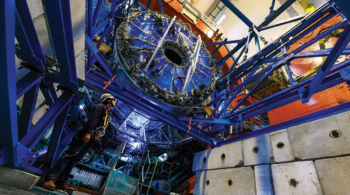 Read article 'A gold mine for neutrino physics'
Read article 'A gold mine for neutrino physics'
A gold mine for neutrino physics
In February this year, the DUNE experiment completed the excavation of three enormous caverns 1.5 kilometres below the surface at the new Sanford Underground Research Facility.










